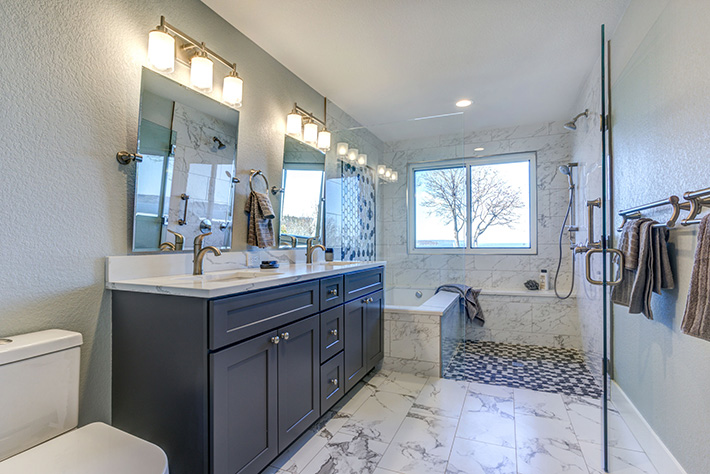Cultured marble vanity sinks have become a popular choice for bathrooms, offering a blend of elegance and practicality. Like any material, they come with their own set of advantages and disadvantages. Here’s a comprehensive look at the pros and cons of cultured marble vanity sinks to help you make an informed decision for your bathroom renovation.
Pros
1. Affordability
Cultured marble is more affordable than natural stone options like marble or granite. It provides a similar luxurious look without the high price tag, making it a budget-friendly choice for homeowners.
2. Customizable Design
Cultured marble can be molded into various shapes and sizes, allowing for custom designs that suit your bathroom layout and style preferences. It also comes in a wide range of colors and patterns, including options that mimic the look of natural stone.
3. Durability
The combination of marble dust and polyester resins creates a durable and resilient material. Cultured marble vanity sinks are resistant to chipping, scratching, and staining, making them suitable for high-traffic bathrooms.
4. Low Maintenance
Cultured marble has a non-porous surface that is easy to clean and maintain. Regular cleaning with mild soap and water is usually sufficient to keep the sink looking new. Unlike natural stone, cultured marble does not require sealing.
5. Versatility
Cultured marble vanity sinks can be integrated with the countertop to create a seamless, cohesive look. This versatility allows for a range of design options, including integrated sinks, backsplashes, and custom edge profiles.
6. Consistency in Appearance
Unlike natural stone, which may have variations in color and veining, cultured marble offers consistency in appearance. This makes it easier to match multiple sinks or other bathroom fixtures.
Cons
1. Susceptibility to Damage
While durable, cultured marble can be susceptible to damage from sharp objects or heavy impacts. Scratches and chips may occur if proper care is not taken.
2. Limited Heat Resistance
Cultured marble is not as heat-resistant as natural stone. It is advisable to use trivets or mats under hot items to prevent damage to the surface.
3. Potential for Staining
Although non-porous, cultured marble can still be susceptible to staining if spills are not cleaned up promptly. Certain chemicals and abrasive cleaners can also damage the gel coat finish.
4. Longevity Concerns
While durable, cultured marble may not have the same lifespan as natural stone options. Over time, the gel coat finish can wear down, requiring refinishing to restore its original appearance.
5. Environmental Impact
The production of cultured marble involves the use of resins and other chemicals, which may have environmental implications. However, newer eco-friendly options are becoming available.
Conclusion
Cultured marble vanity sinks offer an attractive combination of affordability, durability, and design versatility for modern bathrooms. Understanding the pros and cons can help you weigh your options and decide if cultured marble is the right choice for your renovation project. With proper care and maintenance, cultured marble vanity sinks can provide lasting beauty and functionality in your bathroom space.










